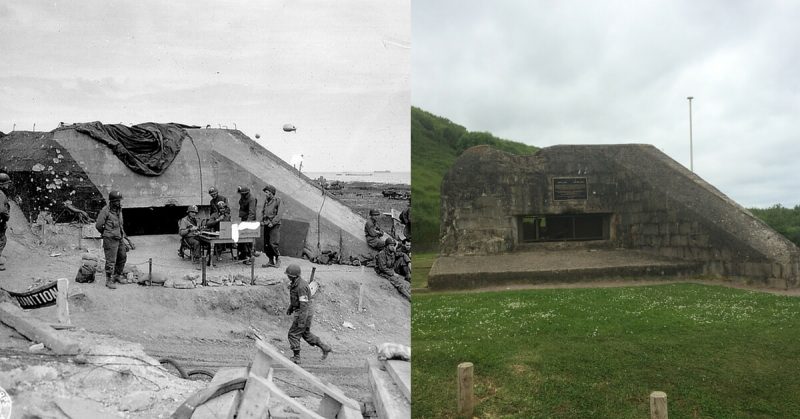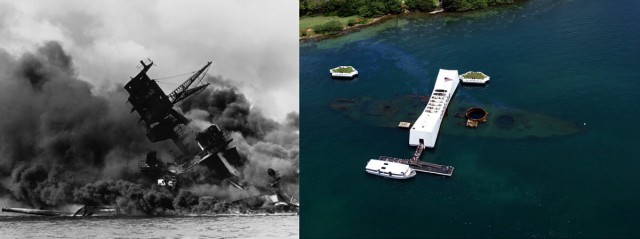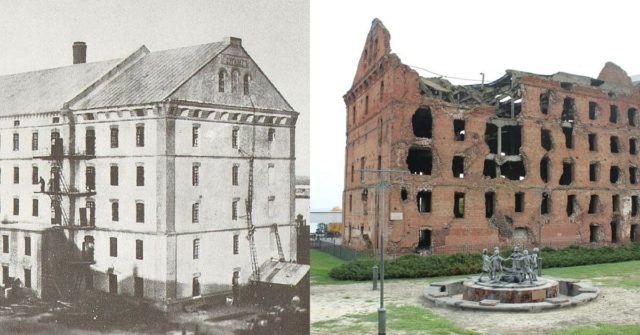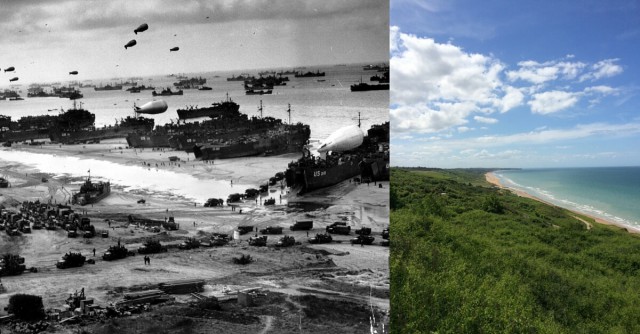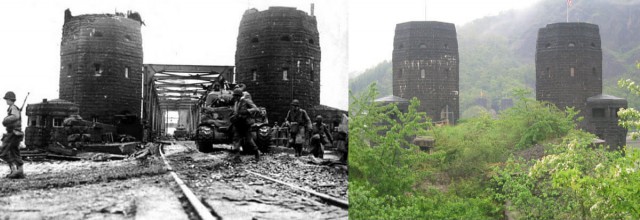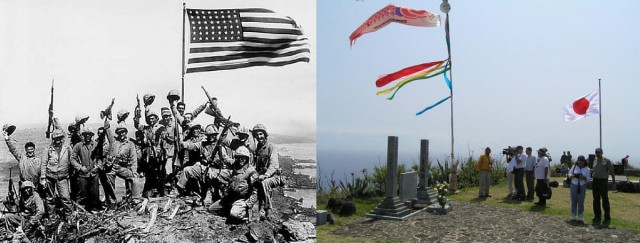After just over 70 years, we look back at 11 iconic locations of the Second World War as they were then – and as they are now.
WWII Starts – Gleiwitz Radio Station
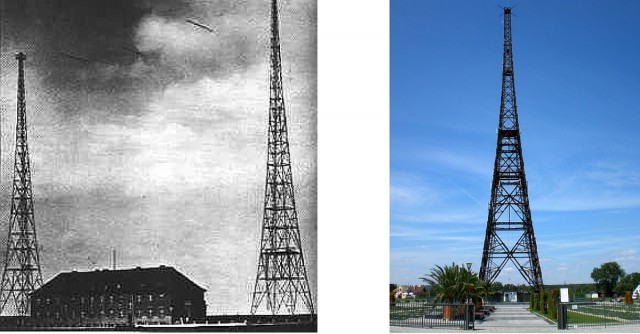
On 31 August 1939, on the eve of the Second World War, Nazi forces conducted a false flag operation on the German radio station at Gleiwitz in Germany. Germans, some of the concentration camp inmates were dressed up in Polish uniforms and attacked the radio station. The next day, under the pretense of this “Polish” attack, Germany invaded Poland which was the start of World War II.
The Fall of France – Paris – June 1940
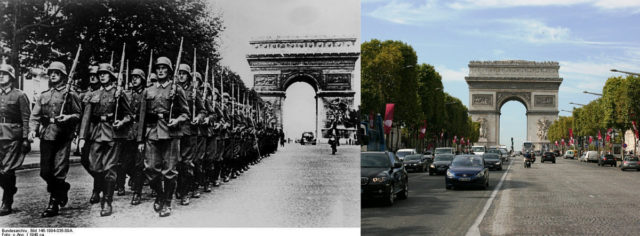
In June of 1940, after the Germans had invaded France and the British Expeditionary Force was withdrawn from Dunkirk, Nazi Germany launched a second major operation, codename Fall Rot.
Even though the depleted French forces were able put up stiff initial resistance, the air superiority and armored mobility of the German Forces quickly overwhelmed what was left of the French Armies. After the German Troops outflanked the Maginot line and had pushed deep into France, they arrived on 14th June at the undefended and “open city” of Paris. France was not able to stop the Germans and not surrendered
France was no longer able to stop the Germans and surrendered shortly after the fall of their capital. With France out of the war most of Europe fell under Nazi Occupation.
US Joins the War – Pearl Harbor / USS Arizona
On the morning of December 7th, 1941, the Imperial Japanese Navy launched a surprise attack on the United States naval base at Pearl Harbor in Hawaii. Taking the Americans completely by surprise they Japanese planes were able to sink and damage several battleships but the aircraft carriers were out at sea and thus survived the carnage.
This attack meant the entry of the United States into the war.
First Japanese Defeat – Midway Island
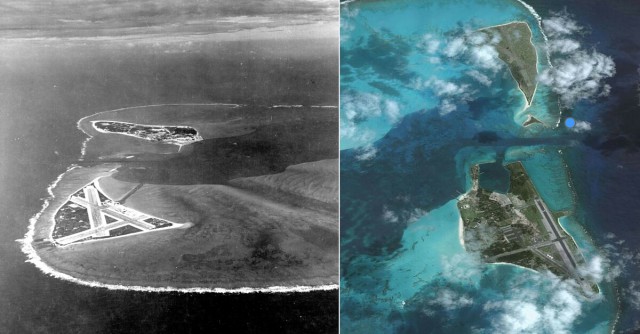
Fought only 6 months after Japan’s attack on Pearl Harbor, the battle of Midway was the turning point in the war in the Pacific. Between 3 and 7 June 1942, the United States Navy was able to sink 4 Japanese carriers which swung the strategic initiative to the United States. From that moment on, Japan was on the defensive.
The Beginning of the End – Stalingrad
The battle of Stalingrad was a turning point on the eastern front, in Europe. Over a million men died in this months-long battle, in the ruins of what was a grand city and the German 6th Army was completely destroyed. This battle meant the final end of all major offensive operations in Russia and from that moment on the were Germans slowly pushed back to Berlin.
Pictured is the Flour Mill, before the battle and as it is preserved today, with a replica monument in front.
Liberating Western Europe – D-Day / Omaha Beach
Omaha Beach was the code name for one of the five beaches on D-Day, the Allied invasion of Normand on 6 June 1944. It was the most daunting beach to land on as the Germans were up on a bluff overlooking the beach and fortified this bluff like no other of the D-Day beaches.
After suffering heavy losses and being stopped for a couple of hours, the German defenses were overwhelmed and a small toe hold was captured.
A Major Setback – Market Garden / Arnhem Bridge
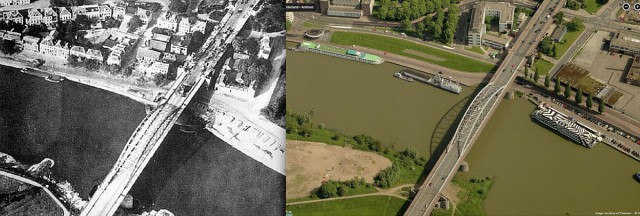
The Bridge at Arnhem, heroically defended by the British 1st Airborne division during the failed Market Garden operation. Arnhem was the “grand prize” of Operation Market Garden, had the ground forces been able to link up with the paratroopers they could then cut off the western part of the Netherlands, stop the V2 rockets that were launched at London.
They would also have an excellent starting point for a drive on Berlin, having crossed all the major rivers and outflanked the German fortified Westwall.
Crossing the Rhine – Remagen Bridge
In early March 1945, the Ludendorff Bridge at Remagen was one of only two remaining bridges across the River Rhine in Germany. The Germans tried to destroy the bridge when they came under attack by an American force but the demolition failed to destroy it. The Americans were able to capture it intact and cross the Rhine river, the daunting but last major obstacle in Germany.
After 10 days it collapsed into the river but by then a sizable bridgehead had been established on the eastern bank of the Rhine.
Island Hopping – Iwo Jima / Mount Suribachi
Iwo Jima was invaded on February 19th, 1945 and Mount Suribachi was captured on February 23rd. It was on top of that mountain that the famous flag-raising took place which was photographed by by Joe Rosenthal
The fight to secure the island lasted until March 27th 1945 when it was declared secure, it was a very costly battle to the Americans for an island that proved to be of limited strategic value.
The End in Europe – Berlin / Fuhrerbunker
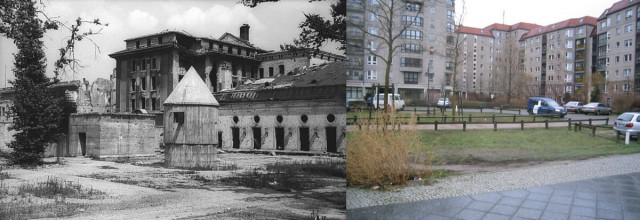
The Führerbunker was an air-raid shelter located near the new Reich Chancellery in Berlin, Germany. It was part of a subterranean bunker complex that was constructed in two phases which were completed in 1936 and 1944. It was the last of the Führer Headquarters used by Adolf Hitler and it was there that he shot himself on April 30th, 1945.
The End in Japan – Hiroshima – Atomic Bomb
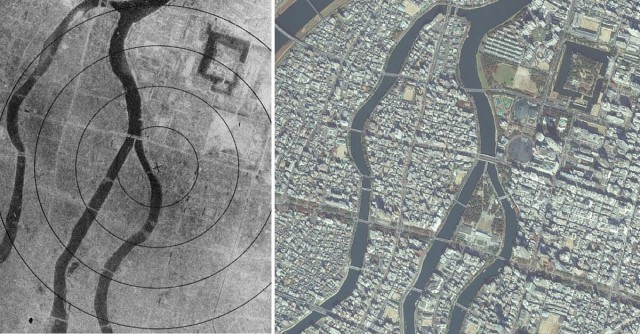
In August 1945, during what turned out to be the final stages of World War Two, the United States dropped atomic bombs on the Japanese cities of Hiroshima and Nagasaki. The two bombings, which killed at least 129,000 people, remain the only use of nuclear weapons in a war in history.
The use of the atomic bombs forced Japan to surrender, ending the Second World War.
